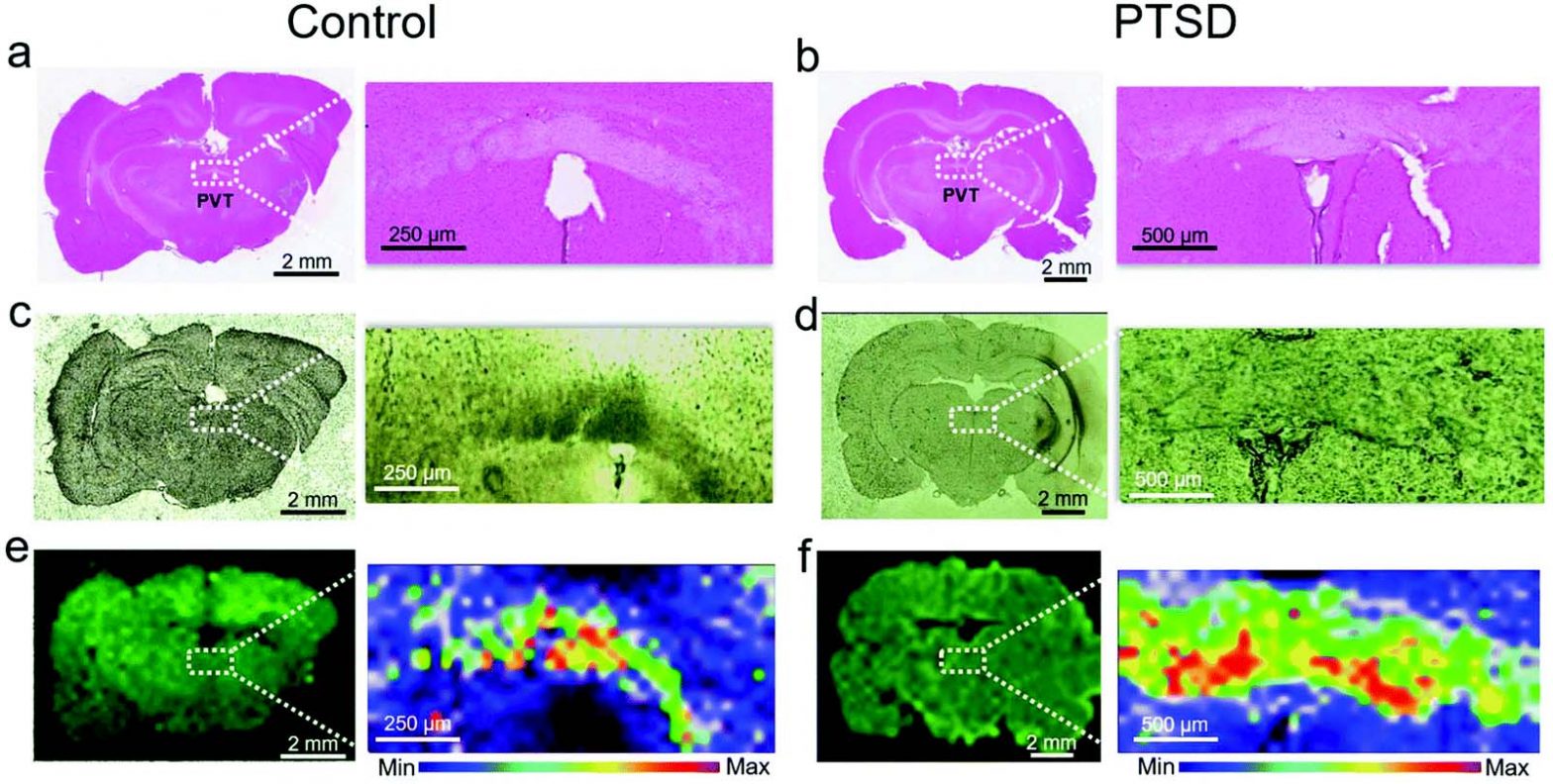- by MS ArticlesAnalytical ChemistryDOI: 10.1021/acs.analchem.5c04063
- by MS ArticlesABSTRACT A simple, accurate, cost-effective, and sensitive analysis method for the determination of vancomycin in plasma samples has been reported using high-performance liquid chromatography-tandem mass spectrometry. UiO-66-NH2 metal–organic framework was synthesized through a hydrothermal method, 5 mg of this compound was introduced into 5 mL of model solution or pretreated plasma adjusted to a pH of 8. The mixture was vortexed for […]
- by MS ArticlesAlkB homolog 1 (ALKBH1) is a member of the AlkB family of Fe(II) and -ketoglutarate (-KG)-dependent dioxygenases, known for its enzymatic activity on various nucleic acid substrates. Its known targets include N1-methyladenosine (m1A), N6-methyladenosine (m6A), N3-methylcytidine (m3C), and 5-methylcytosine (m5C) in RNA, as well as N6-methyladenine (N6-mA, 6mA) in DNA and the histone protein H2A. Moreover, dysregulation or dysfunction of […]
- by MS ArticlesABSTRACT Rationale Flavonoids are phenolic compounds with many health-benefiting properties. However, differentiating different types of flavonoids and their isomers is challenging due to their highly similar structures of various subtypes and different numbers and sites of substituents. Timely quality evaluation of flavonoid-based products is currently almost impossible. Methods An ambient ionization method of direct analysis in real time (DART) ion […]
- by MS ArticlesPublication date: Available online 7 November 2025Source: Journal of ProteomicsAuthor(s): Orlando Morales-Tarré, Xitlally Popa Navarro, Sergio Encarnación-Guevara
- by MS ArticlesPublication date: Available online 7 November 2025Source: Journal of Mass Spectrometry and Advances in the Clinical LabAuthor(s): J. Brandsma, J.W. Thompson, K.L. Schully, J.G. Chenoweth, P. Genzor, S. Krishnan, D.A. Striegel, L.St. John-Williams, A. Moseley, G. Oduro, N. Adams, T. Vantha, E.L. Tsalik, C.W. Woods, D.V. Clark
- by MS ArticlesFormalin-fixed paraffin-embedded (FFPE) samples are essential for clinical research and spatial proteomics (SP) but are technically challenging to analyze by liquid-chromatography coupled mass-spectrometry (LC-MS) due to losses during protein extraction, evaporation during decrosslinking and low-throughput sample preparation methods. Here, we present a streamlined micro-FFPE proteomics sample preparation protocol for laser-capture micro-dissection (LMD) that enables scalable and high-throughput processing in 96-well […]
- by MS ArticlesObjective: Primary liver cancer is a leading cause of cancer-related mortality and harbors recurrent mutations in chromatin regulators such as BRCA1-associated protein 1 (BAP1), yet their functional impact remains unclear. We investigated how BAP1 deficiency affects liver homeostasis and tumorigenesis to clarify its functional role. Design: We employed inducible, liver-specific BAP1 knockdown in mice subjected to diet-induced metabolic stress (including […]
- by MS ArticlesPublication date: Available online 7 November 2025Source: TrAC Trends in Analytical ChemistryAuthor(s): David Fabregat-Safont, Francisco Madrid-Gambin, Alex Gomez-Gomez, Élida Alechaga, Gabriel Gil-Gómez, Óscar J. Pozo
- by MS ArticlesAnalytical ChemistryDOI: 10.1021/acs.analchem.5c04075
- by MS ArticlesAnalytical ChemistryDOI: 10.1021/acs.analchem.5c05632
- by MS ArticlesAnalytical ChemistryDOI: 10.1021/acs.analchem.5c05341
- by MS ArticlesPublication date: Available online 6 November 2025Source: Journal of Chromatography AAuthor(s): Hannah Schanzmann, Veronika Ruzsanyi, Parviz Ahmad-Nejad, Ursula Telgheder, Stefanie Sielemann
- by MS ArticlesSuitability of prolonged meloxicam treatment in mice seems limited due to unfavorable pharmacokinetics, side effects, and impact on home-cage behaviors
- by MS ArticlesPublication date: Available online 6 November 2025Source: International Journal of Mass SpectrometryAuthor(s): Kenzo Hiraoka, Stephanie Rankin-Turner, Dilshadbek T. Usmanov, Satoshi Ninomiya
- by MS ArticlesUntargeted tandem mass spectrometry (MS/MS)-based metabolomics enables broad characterization of small molecules in complex samples, yet the majority of spectra in a typical experiment remain unannotated, limiting biological interpretation. Reference data-driven (RDD) metabolomics addresses this gap by contextualizing spectra through comparison to curated, metadata-annotated reference datasets, allowing inference of spectrum origins without requiring exact structural identification. Here, we present an […]
- by MS ArticlesMass spectrometry imaging (MSI) is emerging as a powerful tool for uncovering the distribution of metabolites in the tumor microenvironment and studying tumor metabolism in vivo. However, to date, MSI of primary patient biobanked tissues contextualized by patient data has been limited to peptides, proteins, and glycans – with few examples for metabolites. This is because most biobanked fresh-frozen tissue […]
- by MS ArticlesRefining EI-MS library search results through atomic-level insights
- by MS ArticlesClick-linking: a cell-compatible protein crosslinking method based on click chemistry
- by MS ArticlesExosomes are extracellular vesicles (EVs) that carry bioactive molecules from a cell of origin and may alter gene expression of the acceptor cell via binding to cell surface receptors and/or delivering their cargo into the cell. Tumor-associated macrophages (TAMs) can increase or decrease tumor growth through various mechanisms, but the impact of TAM-EVs on tumors has been difficult to elucidate […]
Murray Mass Spectrometry Group
Research group of Kermit Murray at Louisiana State University where we use lasers for sampling and imaging and study the chemistry and physics of laser ablation.

